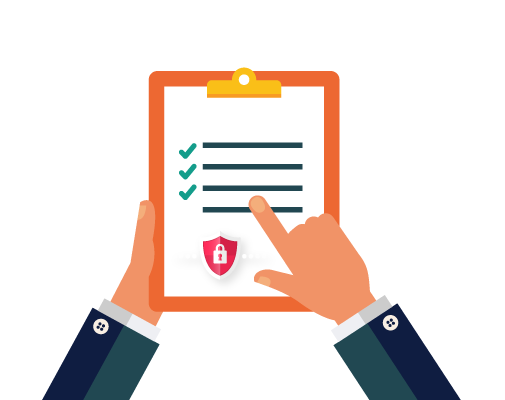
Contents
- 7 Crucial Activities to Test the Security of Mobile Applications
- Mobile Application Security Checklist
- Mobile Application Security Testing Process
- Conclusion
7 Crucial Activities to Test the Security of Mobile Applications
In this era of smartphones where 3G and 4G networks have made it easier to access the internet, it has become easier to perform a business, financial, social transactions. However, according to the recent industry reports, over two-third of large enterprises have been facing security breaches via mobile. The security of data being consumed by the end user using applications via mobile app stores poses a huge security threat. The estimated annual cost of security breaches via mobile has been around $50 billion, globally, and these numbers are increasing rapidly. While this may be a reason for the hackers to celebrate as they will have more to hack into, only a mature security testing enabled environment can save the applications and the enterprises from leaking personal data from mobiles.
To prevent any security breach, it is essential to uncover security vulnerabilities in all parts our environment. We need to check firewalls, balancers, routers, etc. with the help of network segmentation to mobile, static applications, and web services. Discovering security holes of the applications before the attackers by making security a major part of the development and design of your mobile app. So, what possibly is needed? What can be done to avoid security breaches? An application testing strategy is crucial to secure all your private data from hackers. A proper app testing strategy will not only analyze the security risks involved while using an app but also eliminate them effectively.

Mobile Application Security Checklist
Given below are the seven significant activities that businesses and developers should perform for the security of your mobile application before progressing with the development process:
1. Optimize Security Features Based on Platforms:
Mobile apps work on several devices, platforms, operating systems, and networks, where these apps are able to access various features from the phone. It is essential for developers to be cautious about capabilities, features, and limitations of different operating systems, devices and so on. By taking these features into consideration and optimizing security, a secure mobile application can be designed.
2. Strong Hack-proof Code:
Mobile applications are vulnerable to data breaches and malware attacks. This commands that developers pay extra attention to write code that is robust and free from backdoors which in turn is invaded by hackers. Having a strong code that is hack-proof is one of the essential parts of the mobile application security. Application developers must implement mobile app security standards and make sure that their apps transmit, utilize, or store bare minimum data.
3. Allow User Permissions:
To have granular control over the application, mobile application developers should make their devices securer by implementing security measures at the application layer. This will allow users to keep their devices safe from malicious applications and select their level of security settings based on personal preferences.
4. Removal of Unnecessary Security Risks:
There are some features in the applications that are vital for the overall functioning of the application, like social network connectivity. The application developers and designers should pay extra attention towards such features and decide whether they need to keep them within the application or not. Features like these should be managed effectively to ensure the overall security of the mobile application.
5. Wisely Choose the Third-party Libraries:
Third-party libraries are popular amongst mobile application developers. They usually utilize the code offered in such libraries, but vulnerabilities might lurk around in that code. Therefore, it is advisable to test the codes taken from these libraries thoroughly before incorporating it in the mobile application code.
6. Selecting a Reliable Backend:
Security of backend systems is imperative while developing mobile applications. It might be a possibility that hackers gain access to the backend systems and pose a threat to your entire operation. Hence, it is important to give as much importance to the backend as we give to the frontend systems and allow them to go through rigorous security testing before deployment.
7. Test Rigorously:
Last but not the least is performing a rigorous security testing on your mobile application. This is probably the most important security check that you can perform on the application. Mobile application security testing should be the priority at every stage of the designing and the development part. It should be a priority to design and develop your application as per security regulations.
Mobile Application Security Testing Process
There are three basic steps suggested by experts while performing security testing for mobile apps:
• Threat Modeling:
This method is used for identifying threats in the app
• Vulnerability Analysis:
This method is used for identifying vulnerabilities in the application with the previously created test cases using Runtime analysis, Dynamic methods, and forensic methods.
• Intelligence Gathering:
This method is used for gathering as much information as possible about the application.
Conclusion
To ensure that effective testing is performed on your mobile application, a third-party testing company with the right expertise is probably your best bet. At TestingXperts, security testing is a crucial part of the mobile test strategy. Our highly skilled pool of Certified Ethical Hackers and their deep expertise in key security technologies make us the best QA and Software Testing Company. Our conformance with international standards including OWASP, OSSTMM, PCI-DSS, HIPAA, SOX, WAHH, etc. helps us ensure vulnerability-free application with an iterative strategy for further release.
Discover more
Get in Touch
Stay Updated
Subscribe for more info





